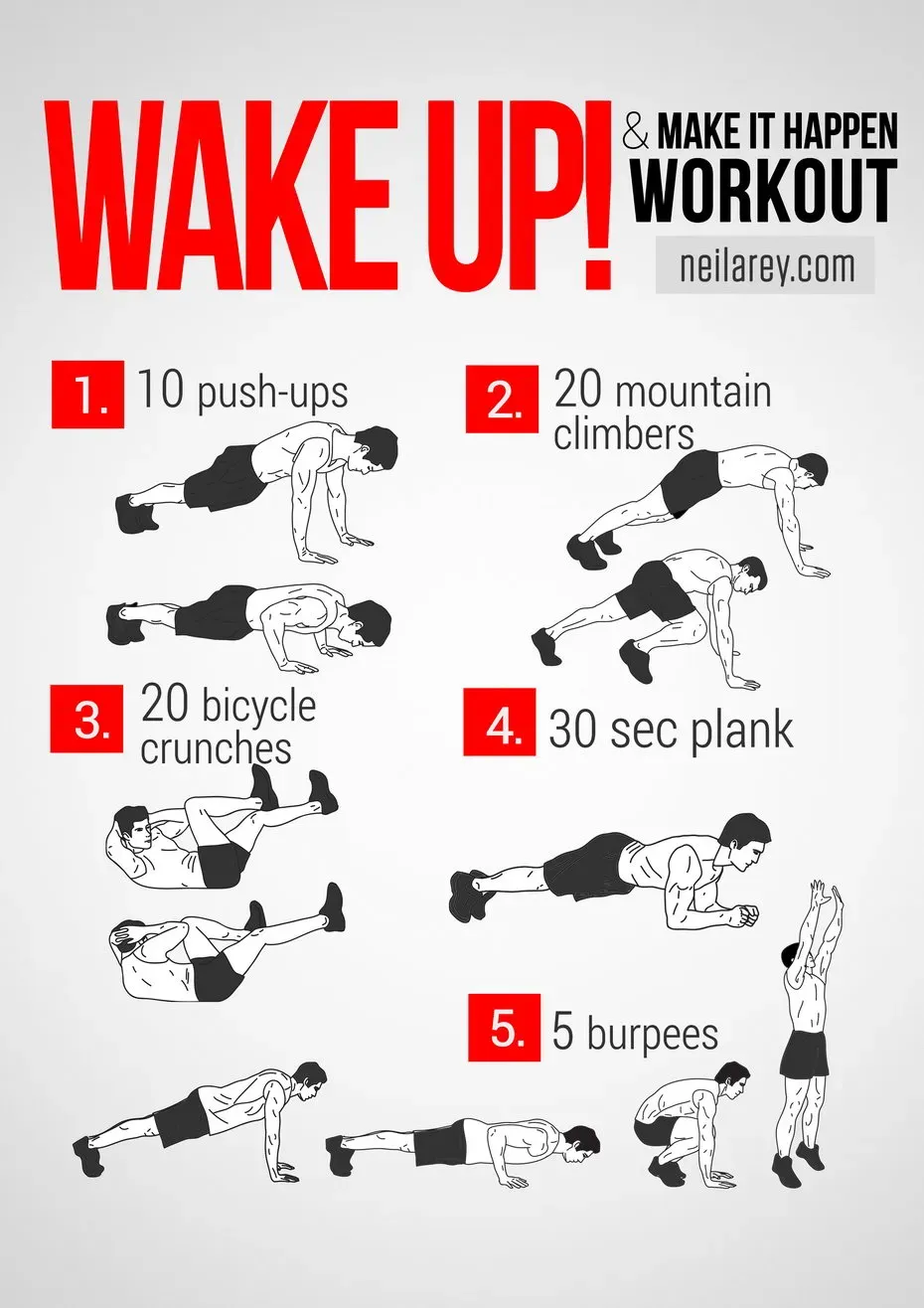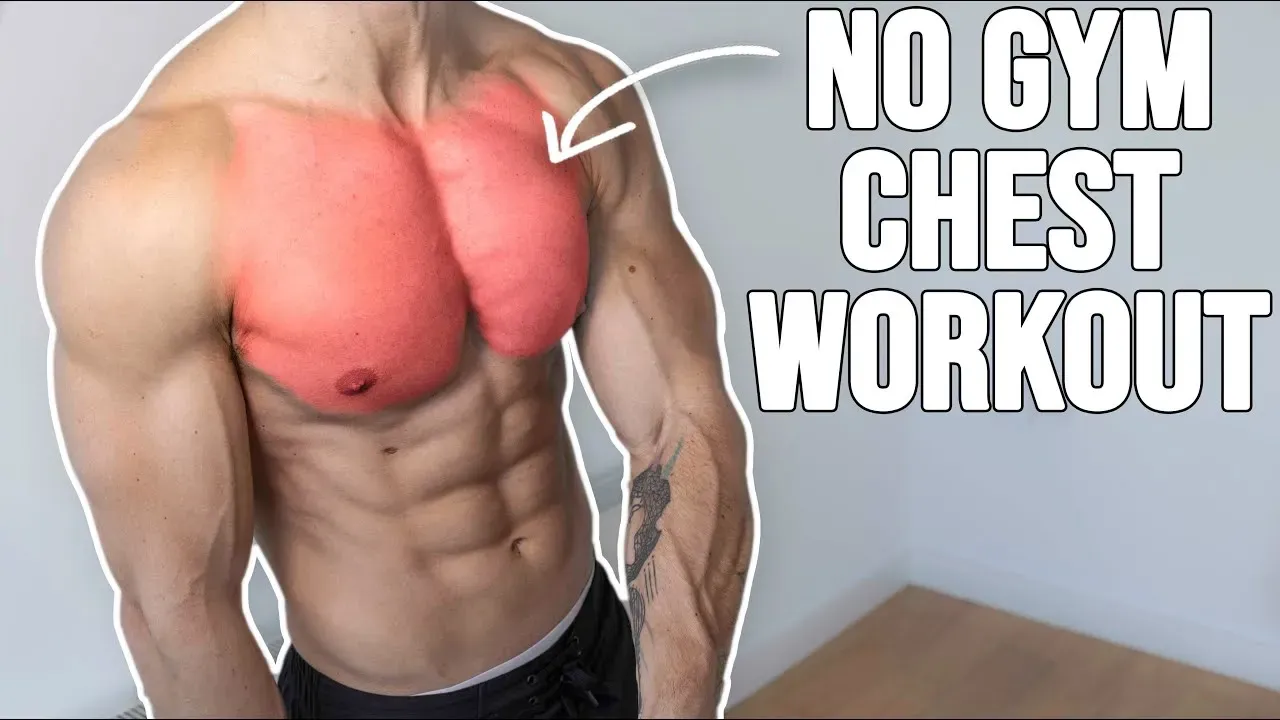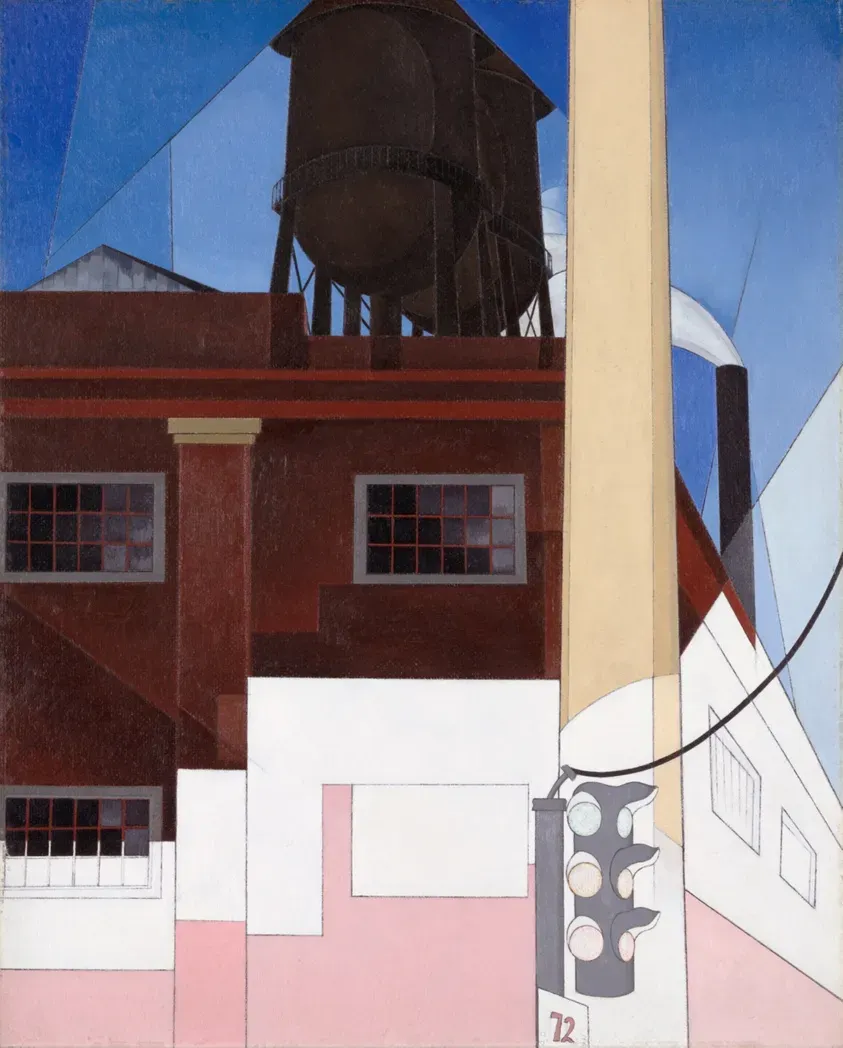Table of Contents
Gym memberships cost money. Lugging weights around is a hassle. Maybe you just prefer the comfort and privacy of your own space. Whatever the reason, you might think building a strong, defined chest requires racks of weights and fancy machines. That's a common misconception, and frankly, a poor excuse.
Why At Home Chest Workouts No Equipment Make Sense

Why At Home Chest Workouts No Equipment Make Sense
Escape the Gym Membership Trap
Let's be honest, gym memberships can feel like a financial black hole. You sign up with good intentions, go strong for a few weeks, and then life happens. Suddenly, you're paying monthly fees for equipment you're not using. It's a common story, and frankly, a waste of hard-earned cash. Why tie yourself down to a physical location and a monthly bill just to train your chest? Your living room, a park, even a hotel room offers all the space you need.
Opting for at home chest workouts no equipment required cuts out the commute, the crowds, and the cost. You work out on your schedule, in your comfort zone. No waiting for a bench, no wiping down sweaty machines that someone else just used. It's pure efficiency and convenience rolled into one.
Unlock Functional Strength and Control
Thinking that bodyweight chest training is just a stepping stone to weights is a mistake. Sure, pressing heavy barbells builds mass, but mastering your own bodyweight builds a different kind of strength – functional strength. At home chest workouts no equipment force you to engage stabilizer muscles you might neglect with machine work or even free weights.
Think about a standard push-up. It's not just about pushing the floor away; it requires core tension, shoulder stability, and control throughout the movement. As you progress to variations, you build incredible body awareness and control. This translates to better performance in other physical activities, not just looking good in a t-shirt. It's about building a robust, capable body, not just inflating muscles.
- Zero cost
- Ultimate convenience (anytime, anywhere)
- Develops core and stabilizer strength
- Improves body control and awareness
- No waiting for equipment
Essential Exercises for At Home Chest Workouts No Equipment

Essential Exercises for At Home Chest Workouts No Equipment
The Unbeatable Push-Up Foundation
let's get down to brass tacks. When you talk about **at home chest workouts no equipment**, the push-up is the undisputed king. Period. It's the fundamental movement that targets your pecs, triceps, and shoulders, while simultaneously demanding core stability. You might think you know push-ups, but are you doing them right? Hands slightly wider than shoulder-width, fingers pointing forward, body in a straight line from head to heels. Lower your chest towards the floor, keeping elbows tucked slightly, not flaring out like chicken wings. Push back up with power.
Don't feel bad if full push-ups are tough at first. That's normal. Start with incline push-ups using a sturdy table or counter. As you get stronger, move to a lower surface like a chair or step. Eventually, you'll hit the floor. The key is consistency and proper form over ego. A sloppy push-up builds nothing but bad habits and potential injuries.
Adding Depth and Angle Variations
Once standard push-ups feel manageable, it's time to add layers to your **at home chest workouts no equipment**. Changing the angle hits different parts of the chest muscle fibers. Decline push-ups, where your feet are elevated on a chair or bench, place more emphasis on the upper chest. Conversely, incline push-ups (hands on a raised surface) target the lower chest more.
Consider wide-grip push-ups to put more stress on the outer chest, or diamond push-ups (hands close together under your chest) to hammer the inner chest and triceps. Each variation offers a unique stimulus. Don't just stick to one; cycle through them or incorporate several into a single session. Variety keeps things interesting and ensures balanced development.
- Standard Push-Up: Targets overall chest
- Incline Push-Up: Hits lower chest
- Decline Push-Up: Emphasizes upper chest
- Wide-Grip Push-Up: Focuses on outer chest
- Diamond Push-Up: Works inner chest and triceps
Mastering Tempo and Time Under Tension
Simply cranking out reps as fast as possible isn't the most effective way to build muscle with **at home chest workouts no equipment**. You need to control the movement and keep tension on the muscle. Think about slowing down the lowering phase (the eccentric part) of the push-up. Take 2-3 seconds to descend, feeling the stretch in your chest.
Pause briefly at the bottom before powerfully pushing back up. This controlled tempo increases time under tension, which is crucial for muscle growth. You'll find that doing 10 slow, controlled push-ups is far more challenging and effective than 20 rushed, sloppy ones. It's about quality, not just quantity, when you're relying on bodyweight.
Crafting Your Routine: Effective At Home Chest Workouts No Equipment

Crafting Your Routine: Effective At Home Chest Workouts No Equipment
Structuring Your No-Equipment Chest Session
Alright, you know the moves. Now, how do you string them together into something that actually builds muscle? Simply doing random push-ups whenever the mood strikes won't cut it. You need structure. Think of it like building a house; you don't just start nailing boards together. A solid routine for your **at home chest workouts no equipment** needs a warm-up, working sets, and a cool-down.
Start with some light cardio and dynamic stretches to get the blood flowing and prepare your joints. Then, dive into your main exercises. Don't just do one type of push-up until failure. Mix it up. A common approach is circuit training: perform a set of one exercise, immediately move to another with minimal rest, and repeat through several exercises before taking a longer break. This keeps the intensity high and works your muscles from different angles in quick succession. Or, use straight sets: complete all sets of one exercise before moving to the next. Both work, but circuits can be great for fitting a lot into a shorter time.
Frequency, Progression, and Listening to Your Body
How often should you hit those chest muscles with your **at home chest workouts no equipment**? For most people looking to build muscle, training the chest 2-3 times per week is a good starting point. Give your muscles at least 48 hours to recover between sessions. Recovery is when the magic happens – the muscle fibers you broke down during the workout repair and grow stronger.
Progression is non-negotiable. If you can easily do 3 sets of 15 standard push-ups with perfect form, doing that forever won't lead to more growth. You need to make it harder. This is where the variations we discussed come in. Move from incline to floor, then to decline. Increase reps, slow down the tempo, add pauses, or try more advanced variations like one-arm push-ups (even assisted ones to start). Always challenge yourself safely. And pay attention to what your body tells you. If something feels sharp or wrong, stop. Pushing through pain is stupid, not tough.
- Train chest 2-3 times per week.
- Allow 48+ hours rest between sessions.
- Increase difficulty by changing push-up variations.
- Increase reps or sets.
- Slow down the tempo for more time under tension.
- Add pauses at the bottom or top of the movement.
- Work towards more advanced variations safely.
- Always prioritize proper form over quantity.
- Listen to your body and rest when needed.
Maximizing Results with At Home Chest Workouts (No Equipment)
Fueling Your Gains: Nutrition and Recovery
Look, you can do all the push-ups in the world, but if you're not fueling your body right and giving it time to recover, you're leaving a ton of progress on the table. Building muscle isn't just about the workout; it's what happens afterward. Your muscles tear down during those intense sets of **at home chest workouts no equipment**, and they rebuild stronger when you're resting and providing the right nutrients.
Think protein. It's the building block of muscle. Make sure you're getting enough protein throughout the day, especially after your training sessions. Lean meats, eggs, dairy, beans, lentils – pick your sources. Don't forget carbs for energy and healthy fats for hormone production. And sleep? Non-negotiable. Aim for 7-9 hours. Your body does its best repair work while you're snoozing. Skipping sleep is like trying to build a house without materials.
Consistency Trumps Intensity (Most of the Time)
It's tempting to go all-out for one brutal session and then take a week off. Resist that urge. Consistency is king when it comes to seeing real changes from your **at home chest workouts no equipment**. Showing up and putting in the work, even if it's just a solid 20-30 minute session, several times a week is far more effective than infrequent, killer workouts.
Progress isn't linear. There will be days you feel strong and days you feel weak. That's normal. The key is to stick to the plan, adapt when needed (maybe lighten the intensity if you're feeling beat up), and trust the process. Building muscle takes time and patience. Don't get discouraged if you don't see dramatic changes overnight. Keep showing up, keep challenging yourself safely, and the results will come.
Pillar of Progress | Why It Matters | How to Implement |
|---|---|---|
Nutrition | Provides building blocks for muscle repair and growth | Eat adequate protein, carbs, and healthy fats; time nutrients around workouts |
Recovery | Allows muscles to rebuild stronger and prevents burnout | Prioritize 7-9 hours of sleep; include rest days |
Consistency | Ensures regular stimulus for adaptation | Stick to your planned workout schedule 2-3 times per week |
Progression | Forces muscles to continue adapting and growing | Gradually increase difficulty (variations, reps, tempo) |
The Mind-Muscle Connection and Perfect Form
This might sound a bit 'woo-woo', but seriously, focus on the muscle you're trying to work. When you're doing those push-ups in your **at home chest workouts no equipment**, don't just go through the motions. Actively squeeze your chest muscles as you push up. Lower yourself deliberately, feeling the stretch in your pecs. This conscious effort, the "mind-muscle connection," helps recruit more muscle fibers and makes each rep more effective.
And form? It's paramount. A hundred sloppy push-ups are less effective and more likely to cause injury than fifty perfect ones. Keep your body in a straight line, engage your core, control the movement. If your hips are sagging or your back is arching, you're not working your chest efficiently and you're setting yourself up for pain. Film yourself if you have to, or use a mirror to check your positioning. Perfecting form should be a continuous process, not a one-time check.
Beyond PushUps: Advanced At Home Chest Workouts No Equipment

Beyond PushUps: Advanced At Home Chest Workouts No Equipment
so you've mastered your push-up variations. Floor push-ups are easy, decline push-ups are challenging but doable, and you can bang out diamond push-ups like it's nothing. What now? Sticking to the same old thing forever is a surefire way to plateau and get bored. True progression in **at home chest workouts no equipment** means venturing beyond the standard presses into movements that demand more strength, control, and even explosive power. This is where bodyweight training gets seriously interesting and frankly, much harder. We're talking about exercises that challenge your stability, increase the leverage against you, or add dynamic force into the mix, pushing your chest muscles in entirely new ways.
Your Chest, Your Gym: Wrapping Up At Home Chest Workouts No Equipment
Look, nobody's saying hitting the gym with heavy iron isn't effective, but let's be honest: life gets in the way, and sometimes leaving the house for a workout just isn't happening. The good news? Your chest doesn't need a fancy address to get stronger. We've covered the fundamental movements, how to string them together into challenging routines, and ways to keep pushing past plateaus, all using nothing but your own body. Stop waiting for the perfect moment or the perfect equipment. The tools you need for solid **at home chest workouts no equipment** are literally right here, right now. Get to it.
